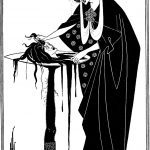Ernest Biéler (1863-1948) was a Swiss painter and illustrator, renowned for his contribution to the Art Nouveau movement and for his profound influence on Swiss art during the late 19th and early 20th centuries. Born in Rolle, Switzerland, Biéler’s artistic journey began at a young age, leading him to study at the École des Beaux-Arts in Geneva and later in Paris, where he was exposed to the vibrant artistic scene of the time. His work is distinguished by a delicate fusion of traditional Swiss pastoral themes with the innovative stylistic elements of Art Nouveau, resulting in a unique aesthetic that celebrates both the beauty of the Swiss landscape and the elegance of form.
Biéler’s early work was marked by a realistic approach to painting, focusing on landscapes and portraits. However, his exposure to the Symbolist movement and the broader currents of Art Nouveau during his time in Paris profoundly influenced his style. He began to incorporate more stylized forms, sinuous lines, and a distinctive use of color that became hallmarks of his mature work. This evolution is evident in his celebrated portraits of women, which often feature intricate floral and geometric backgrounds, emphasizing the unity between human figures and nature.
One of Biéler’s most significant contributions to Swiss art was his role in founding the École de Savièse in the Valais region, where he settled in 1903. This artist colony became a center for the exploration of Swiss identity and culture through art, with Biéler and his contemporaries drawing inspiration from the local landscape, traditions, and people. His work from this period is characterized by a deep empathy for the rural inhabitants of Valais, whose lives and customs he depicted with respect and a keen eye for detail.
Biéler’s technique varied throughout his career, including experiments with fresco and tempera, mediums that complemented his interest in medieval and Renaissance art. His pursuit of these traditional techniques underscored his commitment to craftsmanship and the intrinsic value of art in society. Additionally, Biéler was an accomplished illustrator, and his graphic work for books and posters further disseminated his aesthetic vision and contributed to the Art Nouveau movement in Switzerland.
Despite the regional focus of much of his work, Biéler’s art resonated with broader European artistic trends, making him a pivotal figure in the dialogue between Swiss cultural identity and international art movements. His portrayal of the Swiss landscape and people is imbued with a sense of timelessness and universality, reflecting a broader humanist perspective.
After his death in 1948, Ernest Biéler’s legacy continued to grow, with his work being celebrated for its contribution to the development of Swiss art and its representation of Swiss cultural heritage. His paintings are held in major Swiss museums and collections, where they are admired for their beauty, technical skill, and the unique blend of innovation and tradition that Biéler brought to his depiction of Switzerland.
Today, Ernest Biéler is remembered not only as a master of Art Nouveau but also as a key figure in the cultural and artistic history of Switzerland. His work stands as a testament to the power of art to capture and celebrate the essence of a place and its people, bridging the gap between local tradition and universal artistic expression.





